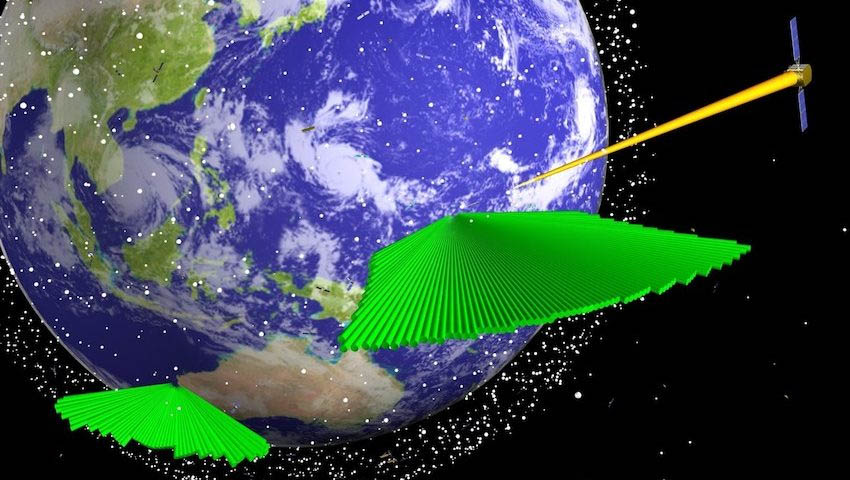That would be located at the Siding Spring Observatory near Coonabarabran, NSW, and is in addition to another US SSA telescope to be located at Exmouth, Western Australia.
That would substantially increase USAF capability to monitor space objects, including satellites and space junk, from the southern hemisphere.
The USAF is also planning another SSA telescope at the Sierra Nevada Observatory in Granada, Spain.
The three current sites of what’s called the Ground-based Electro-Optical Deep Space Surveillance (GEODSS) are located at White Sands Missile Range, New Mexico; Diego Garcia in the Indian Ocean; and Maui, Hawaii.
GEODSS is run by the US Air Force’s 20th Space Control Squadron at Eglin Air Force Base in Florida.
The White Sands telescopes are in the process of relocation to Harold E. Holt Naval Communications Station at Exmouth, WA, under an agreement signed in 2013.
The Australian Department of Defence announced in May that a new building to house these telescopes, built under Project AIR 3029 Phase 2, had been completed, with initial operating capability set for 2021. That was originally slated for 2017.
Harold E. Holt also hosts a US Air Force C-Band Space Surveillance Radar system, which reached full operational capability in 2017.
The GEODSS network of telescopes can objects down to the size of a basketball out to 40,000 kilometres. Each site has three one-metre telescopes equipped with Deep STARE digital cameras, able to track multiple objects.
The USAF revealed its interest in expanding the GEODSS network with a request for proposal (RFP) seeking competitive proposals to manage, operate, maintain, and provide logistical and general support services for the GEODSS system.
It notes the potential future sites, in Australia and Spain, but doesn’t explain why new observatory sites are being considered.
Subject to the appropriate agreements, Australia would be unlikely to have any problems with expanding SSA capability.
Chief of Air Force, Air Marshal Leo Davies, said in May the telescope going to Exmouth would increase capacity to detect and track objects in space in order to manage threats, including space debris, and predict and avoid potential collisions.
“Air Force is working with Australian industry and educational institutions to build domestic space surveillance capability for Australia,” he said.
The US has been working on integrating SSA observation data from allies into a space object catalogue to improve ability to track satellites and other objects and help space operators avoid in-orbit collisions.
USAF Space Command is developing a Unified Data Library, with the aim of integrating allied and commercial data with data from the US space surveillance network and classified sensors and sharing that with non-US defence operators.

